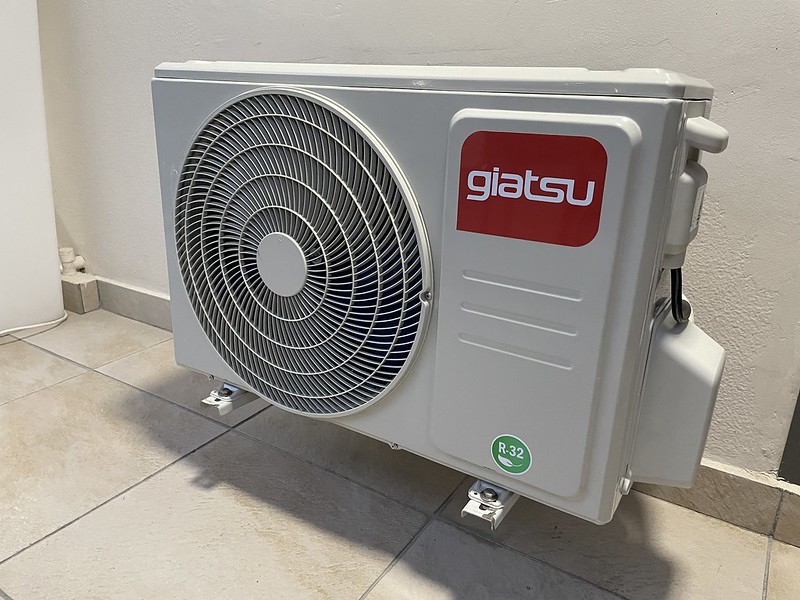Ductless mini split AC units do not use carbon monoxide in their operation. They are electrically powered and do not rely on combustion to generate heat or cool air. This means that there is no risk of carbon monoxide leaks or poisoning associated with these systems.
Understanding Ductless Mini Split AC Systems
Ductless mini split AC units consist of an outdoor compressor unit and one or more indoor air-handling units, connected by a refrigerant line. The indoor units can be mounted on walls or ceilings, and each has its own thermostat for temperature control. The system works by pulling in warm air from the room, cooling it using refrigerant, and then blowing the cooled air back into the room.
Key Components of a Ductless Mini Split AC System
-
Outdoor Compressor Unit: This is the main component that houses the compressor, condenser, and other essential parts. It is typically installed outside the building, often on the ground or mounted on a wall.
-
Indoor Air-Handling Unit(s): These are the units installed inside the rooms or spaces that need cooling. They are responsible for circulating the cooled air and can be wall-mounted, ceiling-mounted, or floor-standing.
-
Refrigerant Line Set: This is the connection between the outdoor and indoor units, through which the refrigerant flows to facilitate the cooling process.
-
Condensate Drain Line: This line carries the condensed water from the indoor unit to the outside, ensuring proper drainage.
-
Electrical Connections: The outdoor and indoor units are connected via electrical wiring to power the system and enable communication between the components.
Energy Efficiency of Ductless Mini Split AC Systems
One of the key advantages of ductless mini split systems is their energy efficiency. Because they do not rely on ductwork, there is less energy loss compared to traditional central air systems. Additionally, many mini split systems use inverter technology, which allows the compressor to adjust its speed based on the cooling demand, further improving efficiency.
Inverter Technology in Ductless Mini Split ACs
Inverter-driven ductless mini split AC systems use variable-speed compressors that can adjust their output based on the cooling needs of the space. This contrasts with traditional fixed-speed compressors, which operate at a constant speed regardless of the cooling demand. The inverter technology allows the system to:
- Precisely match the cooling output to the load, reducing energy consumption.
- Maintain a more consistent temperature, avoiding frequent on/off cycling.
- Operate at lower speeds during periods of lower cooling demand, further improving efficiency.
Improved Air Quality with Ductless Mini Split ACs
Ductless mini split systems also offer improved air quality compared to traditional HVAC systems. The indoor units include air filters that can help remove allergens and other particles from the air. Some systems also offer features like air purification and humidity control.
Air Filtration in Ductless Mini Split ACs
The indoor units of ductless mini split systems typically come equipped with high-quality air filters that can capture a wide range of airborne particles, including:
- Dust, pollen, and other allergens
- Pet dander
- Smoke and other pollutants
- Bacteria and viruses (depending on the filter type)
These filters can be easily accessed and cleaned or replaced, ensuring the system maintains optimal air quality over time.
Safety Considerations with Ductless Mini Split ACs
In terms of safety, ductless mini split systems do not pose a risk of carbon monoxide poisoning. Because they do not rely on combustion, there is no risk of carbon monoxide leaks or poisoning. Additionally, because the indoor units are mounted on walls or ceilings, there is no risk of intruders entering through openings in the walls.
Lack of Carbon Monoxide Risk
Ductless mini split AC units are powered by electricity and do not involve any combustion processes. This means that there is no risk of carbon monoxide being produced or leaked into the living space. Traditional HVAC systems that use gas-fired furnaces or boilers can potentially leak carbon monoxide, which can be a serious health hazard. Ductless mini splits eliminate this concern entirely.
Secure Indoor Unit Placement
The indoor units of ductless mini split systems are typically wall-mounted or ceiling-mounted, with no openings or access points that could be used by intruders. This contrasts with window-mounted air conditioners, which can provide a potential entry point for unauthorized access. The secure placement of ductless mini split indoor units enhances the overall safety and security of the installation.
Conclusion
In summary, ductless mini split AC units do not use carbon monoxide in their operation, as they are electrically powered and do not rely on combustion. These systems offer a range of benefits, including energy efficiency, improved air quality, and enhanced safety compared to traditional HVAC systems. By understanding the technical details and features of ductless mini split ACs, homeowners and HVAC professionals can make informed decisions about the most suitable cooling solution for their needs.

